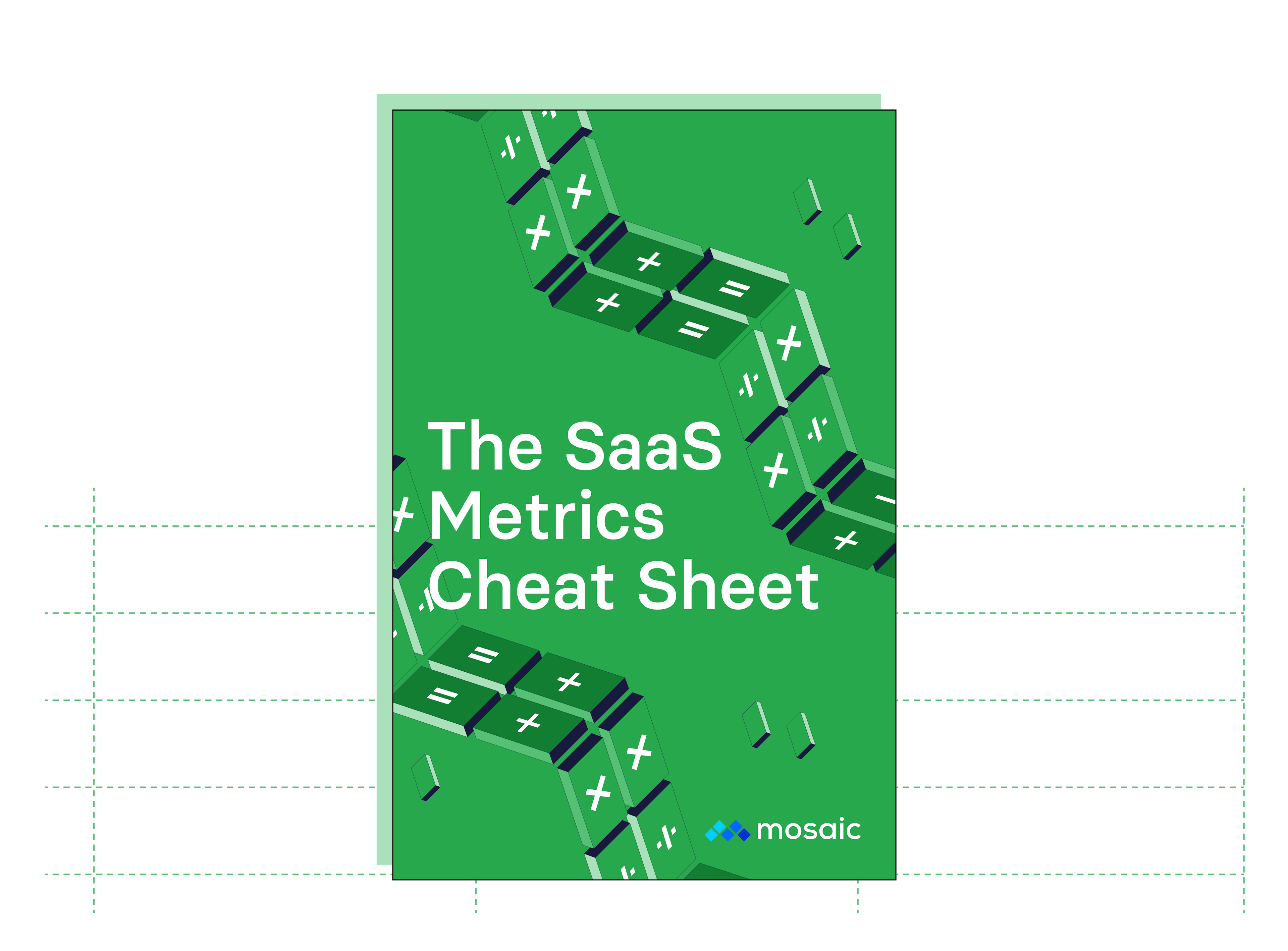How Much Should You Spend on Ads? Three Ways to Forecast Ad Spend

Ryan Winemiller
Director of Growth
Download Our Strategic Financial Planning Blueprint
The name of the game for VC-backed startups is hypergrowth, which leads every business to the same question—how much should you spend on ads?
In a perfect world, there’d be a 1-to-1 relationship between ad spend and growth. You could spend twice as much on advertising and expect to generate twice as much ARR. If only forecasting ad spend were so easy.
In difficult market conditions, it makes sense for SaaS companies (even ones with high-growth aspirations) to spend between 5% and 10% of revenue on digital advertising. But don’t get caught up in this general guideline.
The truth is, there’s no magic answer for how much you should spend on ads. But you can take three different approaches to the budgeting process, depending on what makes sense for your business goals and financial positioning
Table of Contents
Important Considerations for Determining Ad Spend
Forecasting ad spend starts with collecting the right qualitative and quantitative inputs for your SaaS financial model.
Especially for high-growth companies, it’s not enough to base your marketing spend entirely on historical trends. You need to combine that contextual data about returns on past marketing investments with growth goals. There are a few key inputs that can help you do that.
Risk Tolerance
One qualitative input for this kind of spend forecasting is your risk tolerance. In the context of setting an advertising budget, your risk tolerance comes down to your expectations for business growth and your cash runway.
If you want to grow fast, you’ll have to spend more to get in front of a bigger pool of potential customers. But is your business in a position to burn through cash as you wait to see returns?
Companies that are optimistic about the health of their operations and have plenty of cash in the bank may have more tolerance for risk. You have that cash cushion to fall back on as you work out the marketing strategy.
CAC Payback Period
Knowing your historical CAC payback period will give you a good idea of how aggressive you can get with your marketing efforts.
More established companies with historical data from past marketing campaigns will have greater visibility into CAC payback periods. That data will help you get more precise when forecasting ad spend.
But if you’re an earlier-stage company with less historical data, you can make some assumptions about CAC payback. A B2B SaaS company with a subscription model can reasonably assume a customer’s life will be at least 12 months. If you build your ad budget based on a CAC payback period of 12 months, you know you’re returning customer acquisition costs at least within their lifetime.
Beyond that baseline, you can start adjusting your forecast based on how quickly you want to grow, how product development will impact churn rates in the future, and if you’re planning a new funding round.
Understanding of Business Maturity
The maturity of your business is another important factor in how you forecast your ad spending. Growth goals and profitability expectations change drastically as a company evolves from Series A startup to a later-stage business.
Up through your Series B, VC-backed startups are typically looking for massive growth at the cost of profitability. Especially after you reach product-market fit, you’re pouring fuel on the fire of all marketing channels to grow your customer base. You expect to be more aggressive with spending and could maybe withstand longer payback periods.
As your business matures to Series C and beyond, profitability becomes more pressing. Efficiency metrics like LTV:CAC start to matter much more, and investors expect to see that metric hit three or more. At this stage, you may start to weave payroll costs into your forecasts to get a more accurate picture of spending. But at earlier stages, it makes more sense to focus on a simple “ad dollar in, revenue out” approach.
Total Addressable Market
Another factor you should consider when forecasting ad spend is the size of your target audience.
The only way you can assume the “spend more money, acquire more customers” approach will always work is if you have an unlimited market that keeps growing. That’s not a realistic expectation for any marketing team.
Expect a point of diminishing returns with your ad campaigns. If you can identify that ceiling on your potential revenue, you can set more realistic marketing goals and a more accurate advertising budget.
Attribution Model
How you measure attribution will significantly impact the way you view return on ad spend (ROAS).
Ad platforms like Facebook Ads Manager will use last touch attribution because it’s the easiest for them to track. It’s a direct connection between ad dollars spent and revenue returned. But many marketing teams focus on first touch attribution because it orients the team on original lead sources.
There’s no right or wrong attribution model to use when forecasting ad spend. But make sure you pick one to benchmark against. You’ll only have issues when you flip back and forth and end up comparing models that aren’t related.
Sales Cycle
The last piece of context you need to forecast ad spend accurately is an understanding of your sales cycle.
You likely won’t generate opportunities from advertising and close those opportunities in the same month. To get a good idea of how your ads are performing, you need to hold spend steady at least two or three times the length of your sales cycle. Or, you can set up cohort analyses to see how changes in ad spend impact your results.
A small business may not take these approaches, whether that’s because they don’t have the analytics maturity or need faster results. In those cases, you can work off of opportunities closed in the month compared to ad spend in that month—just make sure to add the caveat that the data is directional, not 100% accurate.
Optimize Your Sales & Marketing Departments with Strategic Finance Software
3 Ways to Plan Out Your Digital Advertising Budget
Once you have all the necessary context for your forecast, you can answer the key question—how much should a business spend on advertising?
Depending on how you view your risk tolerance and business maturity, there are three primary ways you can calculate your budget. You can use an aggressive approach, a more conservative path, or a simpler method based on conversion rates.
1. The Aggressive Approach
The aggressive approach to forecasting ad spend uses customer lifetime value (LTV) to drive your budget.
In this scenario, you would multiply LTV by the number of customers you expect to acquire through paid advertising in a given period.
Let’s say your LTV is around $50,000. If you expect to sign ten customers per month, you might know that 50% of those customers will come from Google Adwords, Facebook ads, LinkedIn ads, and other paid advertising channels. If you multiply the five new customers from paid advertising by the $50,000 LTV, you get a maximum potential ad spend of $250,000 to acquire those customers.
This approach makes the most sense for earlier-stage companies that have funding in the bank and are prioritizing customer growth over profitability. You can stand to have a longer payback period instead of focusing on hitting an ideal LTV:CAC ratio.
2. The Conservative Approach
If you’re not in a position to be aggressive with your forecast, you can use the conservative approach that leans on average ARR per customer as a driver.
In this scenario, multiply your average ARR per customer by the number of customers you expect to sign from advertising channels. This gives you a conservative minimum to spend on advertising to acquire those customers.
When you use average ARR per customer as the driver of ad spend forecasts, you’re assuming that your LTV:CAC ratio is 1—which is the absolute minimum you should expect for your business. Anything less, and you’re losing money to sign each deal.
More mature companies can use this conservative starting point as a way to spend less and see how that impacts growth efficiency. Then, you can incrementally increase the budget until you reach the optimal LTV:CAC ratio for your goals.
3. The Simplified Approach
The simpler method for setting an advertising budget is to look at lead conversion rates and cost per lead, specifically from your ad channels.
There are two primary inputs you need for this approach:
- Opportunities created. The total number of customers won during a period divided by the opportunity win rate. Then, reduce that total number of opportunities created according to the percentage of customers won you expect to come from advertising.
- Cost per lead. The total leads in the period divided by your advertising spend for that period. Come up with a trailing 3-month or 6-month cost per lead to account for variation.
Once you have these numbers, you can multiply the number of opportunities created by cost per lead to get your monthly budget for advertising.
Use SaaS financial metrics like CAC payback, LTV:CAC, and LTV to benchmark that budget’s efficiency over time.
Map Out the Right Marketing Budget for Your Business
Forecasting ad spend is just one piece of the marketing strategy puzzle. While it’s crucial to figure out how much you should spend on digital ads, you also have to balance the rest of the marketing plan, which includes content marketing, email marketing, social media marketing, and more.
This is why a collaborative planning process is so important. It’s not enough for finance to run these calculations behind the scenes and just deliver the numbers to marketing leaders on a monthly or quarterly basis. There needs to be a back-and-forth to strategize and determine the best paths forward.
We outlined this kind of collaborative, agile planning process in an ebook. If you want to learn more about mapping out a budget for marketing and other departments, download our Financial Planning Blueprint and create more forward-looking processes.
How much to spend on ads FAQs
What is the importance of understanding my business's risk tolerance when setting an advertising budget?
Understanding your business’s risk tolerance is crucial because it directly relates to your growth expectations versus your cash reserves. Aiming for rapid growth will necessitate a higher ad spend to reach a wider pool of potential customers. However, the central question is whether your business can invest heavily without seeing immediate returns. Businesses with solid operational health and substantial cash might be more willing to take risks, leveraging that financial cushion while refining their marketing strategy.

